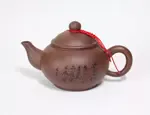The Right Tea Newsletter
–
Issue #45 - February 2022
Welcome to the latest issue of The Right Tea Newsletter!
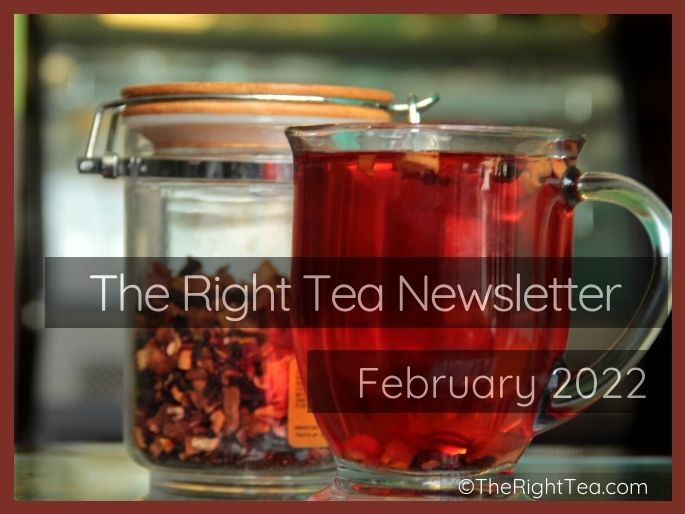
With Valentine’s Day decorations everywhere, February is a month that is often associated with the color red: red roses, red hearts, red everywhere! So why not red tea?
Is there such a thing as a red tea? There are a lot things referred to as "red tea", from herbal teas, blended teas, to true teas but is there an actual red tea type?
In this issue we are going to explore the most common beverages that go by the designation of "red tea" and why that are called this way.
We will also be looking at teas that have been wrongly classified as red teas and that you should be aware so as not to make any mistakes when buying tea.
Let’s begin!
Red Teas – What is this type of tea?
For Valentine’s Day we are tempted to give special gifts for our loved ones of all manner of red things: red roses, red cards, red plushies, red cookies, and even red tea.
However, what is a red tea? Is it a type of tea, like white or green? Is it a blend of teas and herbs? Is it just food coloring? Let’s try and answer the question.
What are Red Teas?
Well, it depends. Confused? Well, it depends if you are talking about herbs or actual tea and even then, it depends on your point of view, or better yet on what classification scheme you use when categorizing your tea.
Chinese Tea Classification
Let’s begin with actual tea from the camellia sinensis plant.
Tea is not classified in the same way in every country. Although today you will find that for the sake of exporting their product most countries will tend to follow the same categorization, there are still some differences that prevail, even when talking about what the color of a tea should be.
If you consider the western way of classifying teas, the color was first based on the look of the dry leaf:
- white tea leaves where typically covered with a silvery down;
- green tea leaves retained their leafy green color;
- black teas were called that because of the way oxidation darken the leaf;
- other types of tea include: yellow, oolong or blue-green, and dark teas. There is no red tea according to this grading system.
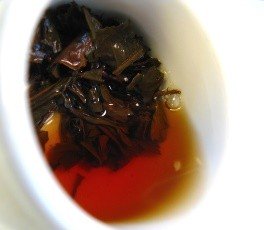
Today, for selling purposes, you will find Chinese red teas labeled as black teas, but be aware that originally Chinese black teas actually referred to the western dark tea type, which includes pu erh teas.
So, always check for the exact type of tea you are purchasing.
Rooibos Tea
This South African herbal tea is very often referred to as red tea and because of this it is sold alongside other types of tea leading to many people thinking that it also comes from the camellia sinensis plant.
Rooibos (meaning red bush in Afrikaans) is actually harvested from the aspalathus linearis plant that is native to Cederberg region in South Africa. This plant is made up of green needle-like leaves that turn a vibrant reddish-orange when oxidized.
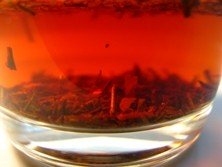
It became popular as an alternative to tea during World War II when access to regular tea was hindered by enemy submarines disrupting shipping routes.
Have you ever tried this red tea? Find out more about it here.
Hibiscus Tea
If you are searching for an infusion or blend that will brew a vibrant romantic red color then this is the red tea for you.
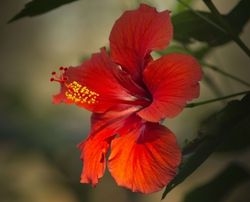
Native to temperate and tropical regions, today Hibiscus tea is a famous beverage in many countries: in Jamaica it is known as Agua de Jamaica; Karkade in the Middle East; Saril in Panama, and these are just some of the examples.
It has long been valued for its cardiac potential, lowering high blood pressure and reducing LDL cholesterol. You will also find this herb in blends that are said to help the immune system due it being rich in antioxidants and vitamin C.
Due to the ability of turning any infusion a vibrant red, hibiscus tends to be present in many "red" labeled blends, even when it is not the main ingredient being publicized in the name of the blend. So next time you buy a red tea, take a look to see if there is any hibiscus in there.
Check out these hibiscus blends from Art of Tea:
We expect berry teas to be naturally red, but often hibiscus is added to achieve this result. Some blends will include the picture of the hibiscus flower on the packaging of a "berry" tea, others you will only find hibiscus on the ingredient list.
Find out more about hibiscus tea here.
Another herb that may give this effect to your teas is rosehip, the fruit of the rose plant. These small fruits are also rich in vitamin C and tend to be added to these berry blends because they help to add a touch of orange-red to the liquid.
Find out more about rosehip tea here.
Mistaken Classifications
This section saddens me to write because while I can recognize that there is a lot of liberty when classifying teas, I sometimes come across teas being classified as red tea by people who should definitely know better.
Some years ago, we attended a workshop about tea and herbs. The instructors did know a great deal about herbs, their properties and how to grow them, but when it came to tea, it seemed like that they had just shoved the topic in there to attract the tea loving crowd.
When presenting the different types of tea: green, white, black, etc., the instructor presented oolong, the semi-oxidized tea, as red tea.
Oolong tea in terms of oxidation is somewhere between a green and a black tea. And while some subvarieties may be sold as green tea or at the other end of the spectrum as black teas, it is often sold as "oolong tea" rather than using a specific color designation.
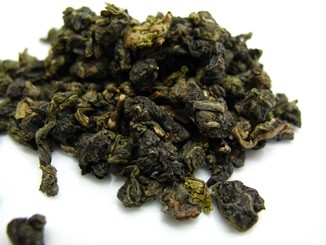
If this tea were to be classified with a color, then the most common consensus among tea experts is that oolong tea should be labeled as a "blue-green" tea due to the color shading of the leaves, although there even that is too general a designation to grade all oolongs correctly.
There is a particular variety of oolong tea from Taiwan that is called Red Oolong tea, but is just one case among many oolong teas and should not be used to label the whole type of semi-oxidized teas.
In conclusion
I hope that you had fun learning about red teas and found this helpful when choosing your Valentine’s gift for the tea lover in your life. Most importantly remember that drinking tea, whatever its color, is a great way to share a moment with someone you love.
Have fun and enjoy your tea!
What’s Next?
More articles about tea are coming, so keep on the lookout for the next issue of our newsletter. While you wait, look around our website and learn more about tea and its health benefits.
Until then make sure to follow us on Facebook for daily tips and other wonderful tea related items.
Follow us also on Pinterest!
Comments / Suggestions
If you have any comments or suggestions regarding this newsletter or anything you would like to see on the website, make sure to contact us using the form you will find here:
Search Website:
Be healthy
with a wide
choice of herbs!

Prepare your tea!
Try these
Tea Samplers!

Wellness Pack at ArtofTea.com

Award Winning Pack ar ArtofTea.com
Find other
tea time items at ...








